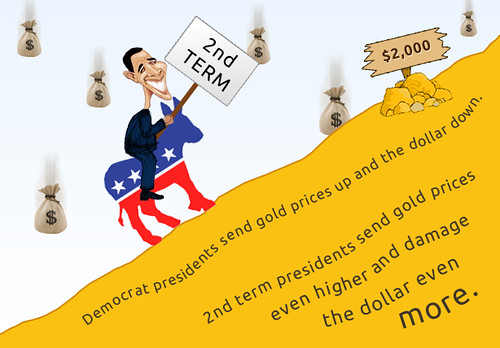The yellow metal is headed for a loss of 5% this week as a result of the rising dollar following Donald Trump’s election victory in 2024.
The COMEX gold prices are expected to drop more than 2% from last week’s closing price as the prices fall below $2,700 an ounce on Friday.
Arslan Ali of Fxempire said that the recent decline in gold prices was primarily due to a stronger US dollar. Investors were encouraged by expectations that policies implemented under Donald Trump’s presidency could spur economic growth and inflation.
As the dollar rises, commodities priced in greenbacks become less attractive to overseas investors. This limits demand and lowers prices.
Silver prices also fell on Friday.
The London Metal Exchange (LME), which trades industrial metals, saw a drop in copper prices as traders focused on a meeting of China’s National People’s Congress.
The US Federal Reserve also cut interest rates at its policy meeting on Thursday by 25 basis points.
The market expected the decision and it followed a rate cut of more than 50 basis points from September’s meeting.
Why is gold still falling despite Fed rate cuts?
Since the US election, gold prices have fallen.
Gold prices were no longer affected by the risk premiums associated with uncertainty due to the rapidity of the US elections, which took place without controversy.
Treasury yields and dollar rose on Wednesday as Trump’s victory became clear and quick.
Gold and silver, which do not yield any interest, were affected by this.
Trump’s win also increased the risk-taking attitude among investors.
According to experts, as a result of this, gold’s appeal as a safe haven declined, and its prices also suffered.
Ali said:
Gold’s decline was attributed to a risk-on attitude in the broader markets, fueled by optimism about Federal Reserve support, and possible fiscal measures in China.
Gold prices tend to rise when interest rates are lower, as gold does not earn any interest like bonds.
China’s economic data – and the trade tensions
Fxempire reports that China’s growing trade surplus, which reached $95.27 billion last month, well above the $75.1 billion expected, indicates a robust global demand for industrial goods.
Exports grew 12.7% year-over-year in October, surpassing expectations for a 5% increase.
China’s imports dropped by 2.3%, which is worse than expected, and indicates a subdued consumption.
Financial markets were thrown into greater uncertainty by the conflicting data.
Reduced imports may mean a weaker demand for commodities like gold and oil.
Exports increased in October, but industrial activity was still resilient.
Although industrial demand will support sentiments towards silver, this won’t be the case for gold.
Gold’s appeal as a safe haven will be further eroded by the robust industrial activity of the second largest economy in the world, even though jewellery demand is already low.
The increased tensions in trade with the US would be a positive.
The president-elect, with Trump in the White House again, could raise tariffs on all imports from China.
Experts say that if trade relations between China and other countries are strained, this could lead to a change in global alliances, which would affect the economic climate.
In a recent report by Fxstreet, Muhammad Umair, Gold Predictors analyst, stated:
Weakening of the US dollar may make gold more appealing to investors abroad, potentially increasing gold’s value.
Forecast for the short-term
The trend of gold prices is still bearish in the short term.
Analysts at Fxempire believe that if prices fall below $2,668 an ounce on COMEX it may intensify sales.
Prices could go above $2,700 an ounce if gold prices break above their resistance level at $2,696.64/ounce.
Ali, from Fxempire, said that traders are watching closely these levels in order to determine the next direction. Any sustained move above or beneath could indicate a change of momentum.
The US Fed Chairman Jerome Powell announced on Thursday, in a positive development for the gold price, that the US economy was resilient and that the central bank will ease its monetary policy.
CME FedWatch shows that traders have priced in a probability of 74.5% for the Fed to cut rates another 25 basis points at its meeting in December.
The December gold contract at COMEX closed on Tuesday, November 30, 2012, at $2,696.10 an ounce. This is a 0.4% decrease from the previous closing price.
This post, Why gold prices fell despite the Fed cutting rates this week, may be updated as new information becomes available.
This site is for entertainment only. Click here to read more






